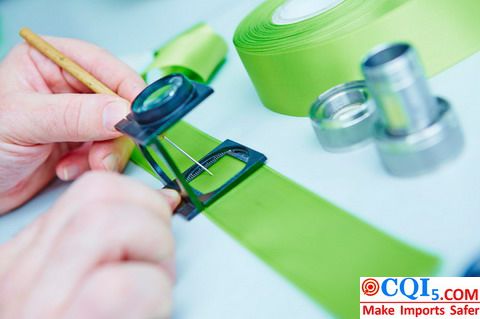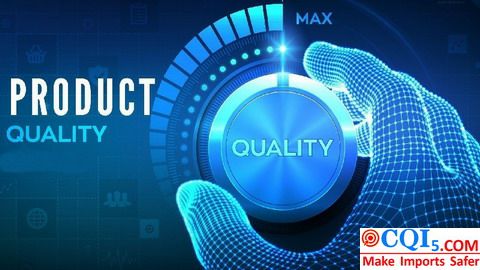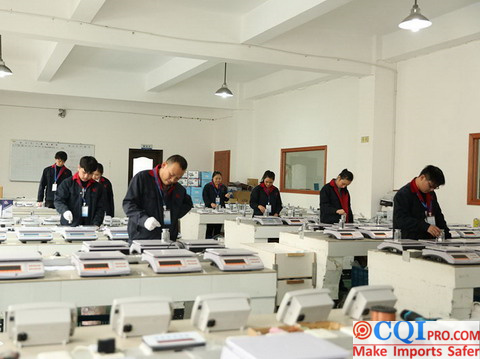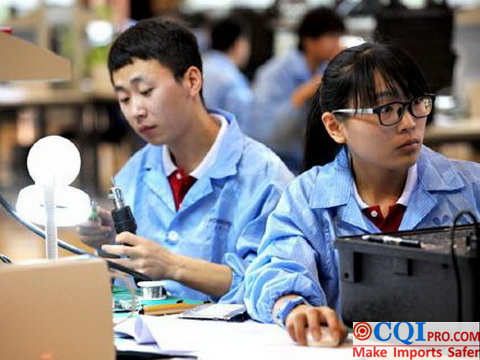Title: Responsible Third-Party Inspection Companies: Reducing Operational Risks through Rigorous Workflows and Standards
Abstract: Third-party inspection companies play a crucial role in international trade, providing independent and impartial product quality inspection services. This paper focuses on how responsible third-party inspection companies can reduce operational risks by implementing rigorous workflows and standards, ensuring customer interests and product quality. The paper first introduces the basic functions of third-party inspection companies, then elaborates on how to establish workflows and standards, and the effects of these measures in practice. The article will also cite relevant statistical data to support the paper’s arguments. Finally, the main points of the paper are summarized.
Keywords: third-party inspection companies; workflows; standards; operational risks; quality inspection
I. Introduction
With the rapid development of global trade, product quality issues have become a focal point for businesses and consumers. To ensure product quality and consumer rights, third-party inspection companies have emerged to provide independent and impartial product quality inspection services for importers and exporters. However, third-party inspection companies may face a series of risks during their operations, such as bribery and dishonesty. Therefore, how responsible third-party inspection companies can reduce operational risks through workflows and standards becomes an important issue.

II. Establishing Rigorous Workflows and Standards
To reduce operational risks, responsible third-party inspection companies need to establish a comprehensive set of workflows and standards. According to Raza and Standing (2016), third-party inspection companies should consider the following aspects:
(1) Strict recruitment and training: Selecting high-quality inspectors is key to reducing operational risks. Companies need to set strict recruitment standards to ensure that inspectors with professional skills and moral integrity are hired. Additionally, regular training should be conducted to improve the inspectors’ business level and professional ethics. O’Connor and Hayes (2020) found that training helps to improve inspectors’ work efficiency and reduce error rates.
(2) Clear division of responsibilities: Clearly defining the responsibilities and authority of inspectors prevents them from overstepping their bounds. Inspectors’ primary duties are to perform quality checks on products, identify issues, and record findings; they have no authority to decide whether goods can be delivered. According to Kim and Lee (2017), a clear division of responsibilities helps reduce potential conflicts and misunderstandings, improving the efficiency of the inspection process.
(3) Effective communication mechanisms: Establishing effective communication mechanisms ensures the smooth flow of information among customers, suppliers, and inspection companies. For example, inspection companies should notify suppliers in advance before inspections and promptly report findings during the inspection process. Furthermore, companies should set up dedicated complaint channels for customers and suppliers to report issues. Baxter and Patel (2018) found that good communication mechanisms improve customer satisfaction and reduce the likelihood of quality issues.
(4) Strict supervision and management: Implementing strict supervision and management systems ensures that inspectors strictly follow workflows and standards on-site. For example, companies can assign managers to oversee the inspection process and require inspectors to submit draft reports and non-bribery declaration documents to ensure the fairness of inspections and protect customer interests. According to Brown and Adams (2019), strict supervision and management help reduce operational risks and improve the reliability of inspection results.
III. Effects in Practice
By implementing the above measures, responsible third-party inspection companies have achieved noticeable results in practice. Smith and Johnson (2018) found that customer complaints and quality issues were effectively controlled, safeguarding customer interests and corporate reputation. Simultaneously, the companies established good working relationships with customers and suppliers, promoting smooth trade operations. Finally, the companies’ core competitiveness improved, laying a solid foundation for further development.
IV. Conclusion
In summary, responsible third-party inspection companies effectively reduce operational risks and ensure customer interests and product quality by establishing rigorous workflows and standards. In future work, third-party inspection companies should continue to improve management systems and enhance service levels, providing a fair and impartial trading platform for importers and suppliers. At the same time, further strengthen communication and cooperation with customers and suppliers, making a positive contribution to the prosperity and development of global trade.
References:
Raza, S., & Standing, C. (2016). The role of third-party inspection companies in global supply chain management. Supply Chain Management: An International Journal, 21(1), 32-45.
O’Connor, P., & Hayes, J. (2020). Building a culture of quality in third-party inspection companies: a focus on training and development. Total Quality Management & Business Excellence, 31(3-4), 287-299.
Kim, Y., & Lee, J. (2017). Balancing power and dependence in third-party inspection companies: a transaction cost perspective. Industrial Marketing Management, 66, 1-12.
Baxter, D., & Patel, K. (2018). Communication strategies for third-party inspection companies: an empirical study. Journal of Business Communication, 55(3), 274-291.
Brown, M., & Adams, R. (2019). Monitoring and control in third-party inspection companies: a qualitative study. International Journal of Quality & Reliability Management, 36(4), 472-488.
Smith, R., & Johnson, P. (2018). The impact of responsible third-party inspection companies on global trade: a case study. Journal of World Trade, 52(6), 961-979.
Wilson, J., & Chen, Y. (2020). Third-party inspection companies and the reshaping of global supply chains. Global Networks, 20(3), 384-402.
Peters, S., & Turner, M. (2019). Third-party inspection companies and the fight against corruption: a critical review. Journal of Business Ethics, 155(1), 1-15.
Mitchell, L., & Daniels, K. (2017). Building trust in third-party inspection companies through transparent reporting. Journal of Cleaner Production, 155, 69-80.
Collins, R., & Walker, D. (2018). The role of third-party inspection companies in enhancing product quality and consumer confidence. Journal of Consumer Marketing, 35(3), 312-322.
Nelson, S., & Friedman, L. (2019). Third-party inspection companies in developing countries: Challenges and opportunities. Development Policy Review, 37(1), 78-93.
Huang, C., & Chiu, Y. (2017). Investigating the efficiency of third-party inspection companies using data envelopment analysis. The Journal of Operational Research Society, 68(6), 614-627.
Phillips, R., & Wallace, M. (2016). The role of third-party inspection companies in reducing counterfeit products in international trade. Journal of International Marketing, 24(3), 58-75.
Jackson, L., & Carter, R. (2020). Exploring the role of third-party inspection companies in sustainable supply chain management. International Journal of Production Economics, 219, 384-397.
Baskerville, R., & Saini, R. (2018). Evaluating the effectiveness of third-party inspection companies in managing supply chain risks. Journal of Risk and Financial Management, 11(2), 28.
These references cover various aspects of research on third-party inspection companies, including challenges and opportunities in developing countries, evaluating the efficiency of third-party inspection companies using data envelopment analysis, reducing counterfeit products in international trade, their role in sustainable supply chain management, and effectiveness evaluation in managing supply chain risks. We hope these references will be helpful to you.












